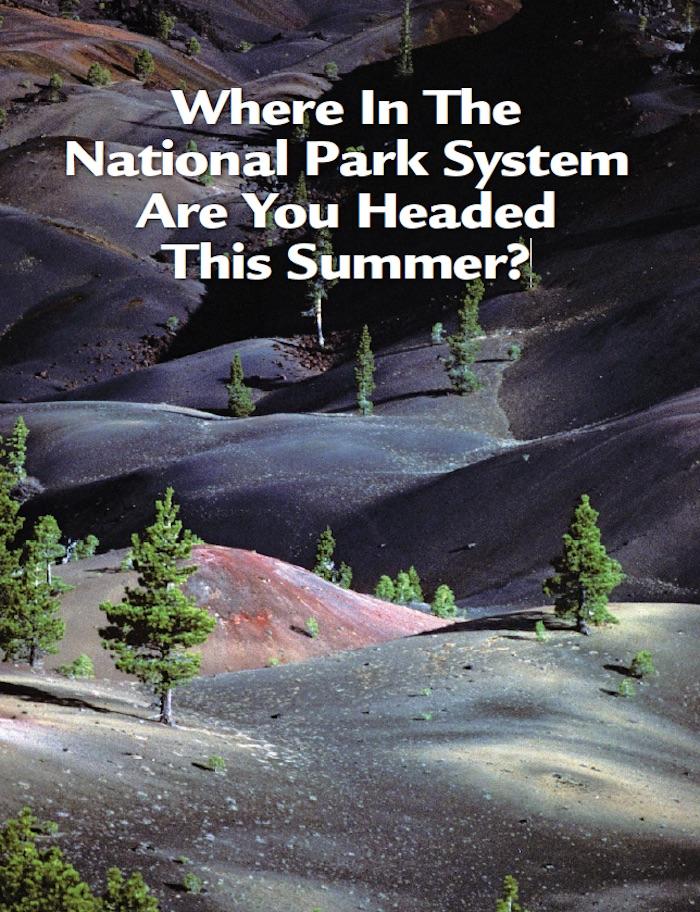
Spring’s rains portend summer weather. Long, comfortable days in the sun are upon us. But what are your plans; where in the National Park System will you go? Will you go in search of paleontological relics or active volcanoes; long trails or quiet lakes? Or, will you just sit on the beach and fly a kite? The park system can handle every dream, and more, as we point out.
Explosive Parks
Mount Rainier National Park is the obvious choice in this category, it being a dormant volcano. If you’re looking for more action, Hawai’i Volcanoes National Park is the place, with its gurgling, puckering and, this year in particular, sputtering lava displays.
There’s always Lassen Volcanic National Park (above photo) in northern California. Lassen has a perfect peak to summit, trails through the Devastated Area, thermal pools, and nice campgrounds. Nearby Crater Lake National Park is another sound choice with its volcanic crater within a volcanic crater, wonderful hiking options, and mesmerizing blue water. You can even follow the Volcanic Legacy Scenic Byway that links the two.
Sunset Crater Volcanic National Monument in Arizona is another area with the greatest earth on show. Volcanic craters and cones are dotted with Ponderosa pines, and there’s a lava flow hike into, and human history attached to, this volcanic landscape.
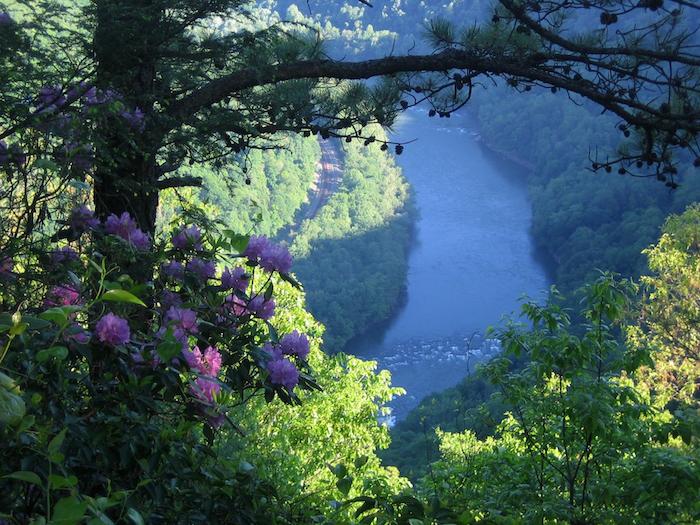
New River Gorge National River in West Virginia offers cool waters, bucking rapids, and lazy days of fishing/NPS
Run, River, Run
Since you’re bound to get wet, summer is just great for boating and running rivers. Streams are generally full, weather and water tend to be warm, and the long days offer time to paddle, hike, and relax in camp.
Mention paddle trips and the epic Colorado River through Grand Canyon National Park tends to come up, as do Buffalo National River and Ozark National Scenic Riverways.
But consider something different, such as the Obed Wild and Scenic River that courses along the Tennessee-Kentucky border. You can experience what the Cumberland Plateau looked like before even Daniel Boone headed west.
Kayakers who trek to West Virginia can test themselves against two of the best paddling rivers in the East: the New and the Gauley. While paddling in New River Gorge National River runs throughout the summer, the prime Gauley season is just a handful of weekends in September when the U.S. Corps of Army Engineers releases water from the Summersville Dam.
The Gauley season begins the first weekend after Labor Day, and continues for six weekends (five 4-day weekends, and one 2-day weekend). Don’t miss this year’s Gauley Fest, scheduled for September 13-16.
For adventure seekers, head north to Alaska, to the Gates of the Arctic National Park and Preserve. There you can choose from six Wild and Scenic Rivers: Alatna, John, Kobuk, Noatak, North Fork of the Koyukuk, and the Tinayguk. If you like trees with your water, float the Kobuk River, which the Park Service says “passes through one of the largest continuous forested areas in the Park and Preserve.”
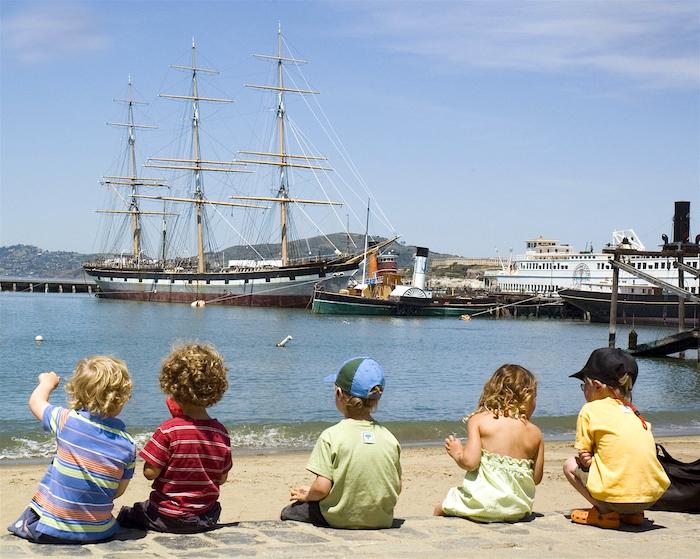
A history of sailing is explained, and showcased, at San Francisco Maritime National Historical Park / NPS
Some History With That Vacation?
If you want some history with your landscape, then head to places such as Gettysburg, Morristown, San Antonio Missions, and Golden Spike. There are many historic sites to choose from.
Gettysburg National Military Park’s landscape is walkable as you try to envision the epic battles that took place here July 1-3, 1863. You can walk the Cemetery Ridge, Devils Den, and Pickett’s Charge trails, or visit the Soldiers’ National Cemetery where President Lincoln delivered his memorable address.
The National Mall and Memorial Parks in Washington, D.C, are full of history, both American and natural. There are memorials for Presidents Jefferson, Lincoln, and Franklin Delano Roosevelt, as well those honoring Korean, World War II, and Vietnam veterans. Stand quietly in Ford’s Theater and try to imagine the shot that rang out as President Lincoln was assassinated.
If you find yourself on the West Coast, then stop at San Francisco Maritime National Historical Park. There, you’ll find a nice collection of 19th century sailing ships (both wind and steam powered) and even a 1914 paddlewheel tug. You’ll also find the Maritime Museum, where WPA-era murals grace some interior walls, above revolving exhibits of maritime history.
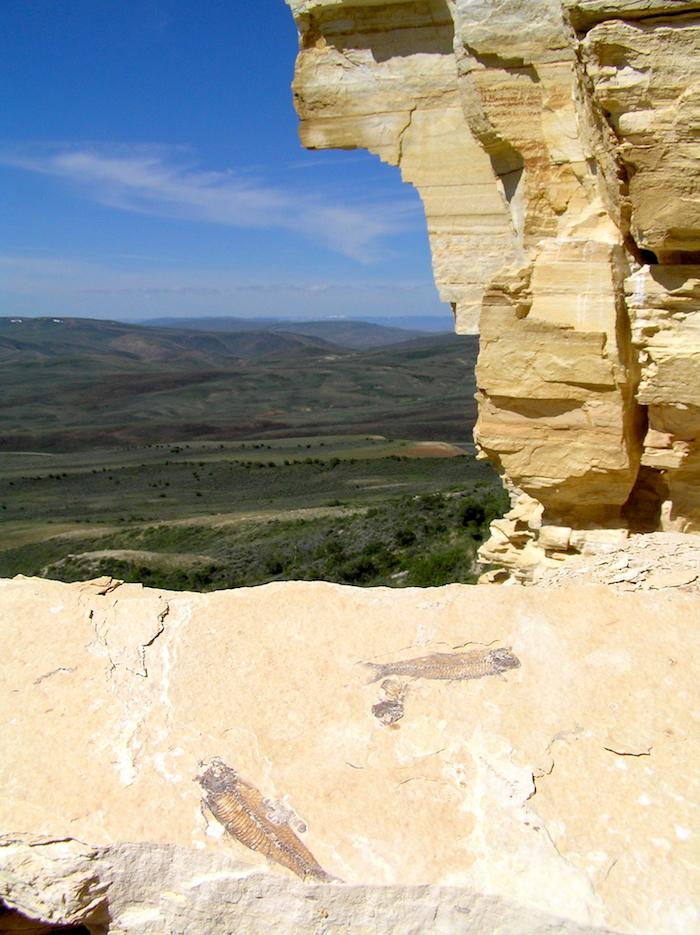
Inhabitants of ancient lakes are now locked in stone at Fossil Butte National Monument in Wyoming / NPS
Fossilized Parks
You never know where fossilized remains of some fish, animal, bird, or flower might rise to the surface of the earth. In 2010, 7-year-old Kylie Ferguson spotted a fossilized saber-tooth cat’s skull at Badlands National Park in South Dakota while participating in a Junior Ranger program. Perhaps you’ll be that lucky too, but if you don’t want to take a chance on seeing a fossil, there are a number of great parks to visit.
Fossil Butte National Monument in southwestern Wyoming has an amazing display of fossils that date back to when this part of the country was wet and tropical. Gar, herring, and even sunfish (ancient relatives of many of today’s freshwater species) swam in three lakes (Goshute, Uinta, and Fossil) that shimmered here 55 million years ago. While the lakes are gone, the sediments they left behind have long since been compressed into stone, locking many of those aquatic species in place. Visit the monument’s visitor center and not only can you tour a room full of incredible specimens, but you also can watch a preparer clean away the matrix surrounding a fossil.
Dinosaur National Monument, not terribly far south of Fossil Butte, has arguably the best displays and collection of fossilized dinosaur remains in its Quarry Exhibit Hall. Here you can see more than 1,500 fossils embedded in a rock wall, which is protected by the building. Among the remains are those of Allosaurus, Apatosaurus, Camarasaurus, Diplodocus, and Stegosaurus. But fossils at the monument aren’t only found in the exhibit hall; they turn up regularly across the park’s landscape.
After you tour the hall, head to the Fossil Discovery Trail and enjoy the dinosaur fossils embedded in the landscape.
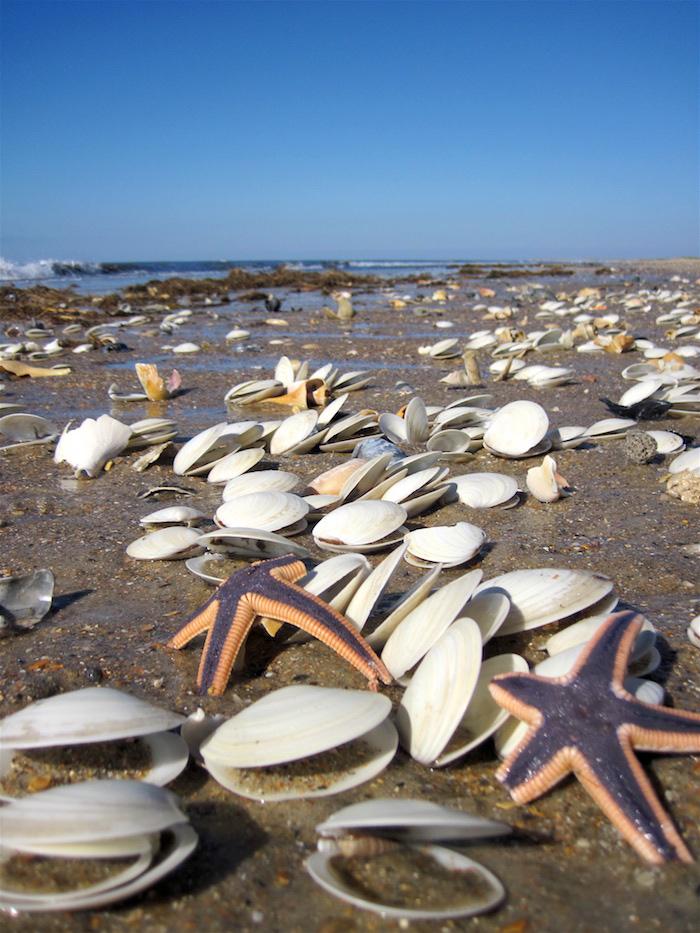
One of the best beaches for shell collectors is Shackleford Banks at Cape Lookout National Seashore in North Carolina/NPS, Vickie Boutwell
Great Seashores For Seashells
Visit a national seashore and you’ll assuredly encounter seashells. Just be sure to check with the specific seashore for any regulations they have for shell collectors. For instance, at Cape Lookout National Seashore you may collect “up to two gallons of uninhabited shells per person, per day for non-commercial use.”
Now, if you’re a collector, here are some great beaches to check out:
Big Shell Beach at Padre Island National Seashore in Texas. The most likely shells you’ll encounter are common arcs, coquina, cockles, and quahogs.
Knobbed Whelks, Bay Scallops, Scotch Bonnets, and other types of shells can be found along the uninhabited outer barrier beaches at Cape Lookout National Seashore on North Carolina’s Outer Banks.
At Cape Hatteras National Seashore next door, they say December is the key month to look for shells if you want to add conches to your collection.
Search the beaches of Cumberland Island National Seashore for shells and you might also come upon some fossilized sharks teeth.
To improve your odds of having a nice selection of shells to choose from, visit beaches after storms; heavy waves can kick up quite a lot of shells.
Go Fly A Kite
Sometimes you just need to kick back and fly a kite, and there are many places in the National Park System to just relax.
At Indiana Dunes National Lakeshore, the 15 miles of shoreline along Lake Michigan provide a perfect breeze for those kites.
Not surprisingly, Wright Brothers National Memorial in North Carolina is also a decent place to fly a kite; Wilbur and Orville knew the winds here were good for lift. Plan to visit the park in mid-July and you can take part in the 40th Annual Wright Kite Festival, where some huge kites (up to 100 feet long!) are expected to take to the skies. There also will be kite-flying lessons, and even kite-making classes.
Padre Island National Seashore in Texas has plenty of summer winds for you to fly your kite. However, the seashore typically hosts a kite festival in February, filling the sky with all sorts of colorful kites, including some intricate and creative Chinese kites.
There you have it, travelers. More than enough options to fill your summer.



Add comment